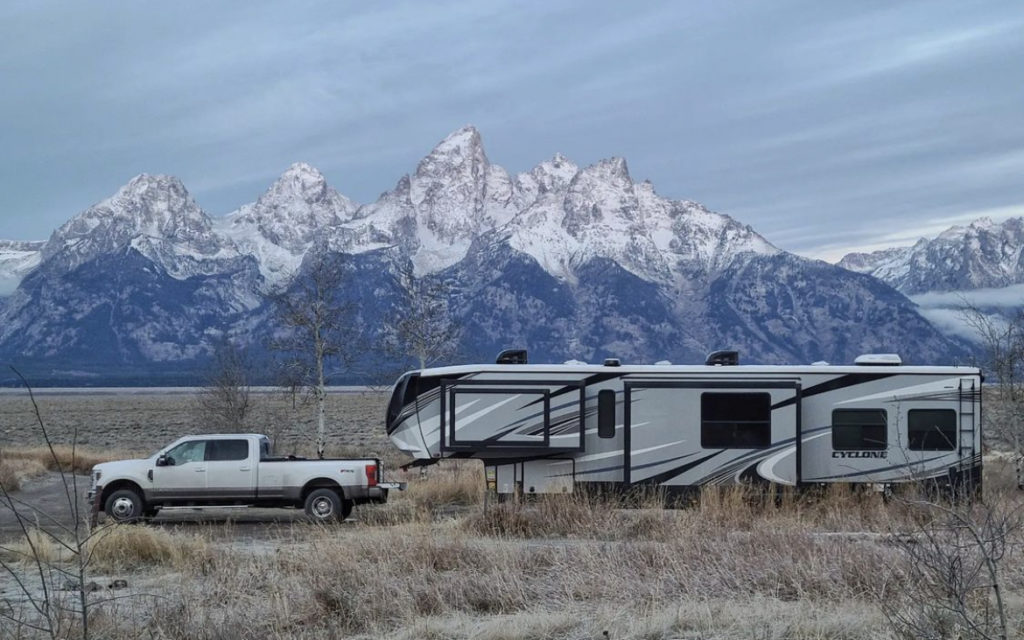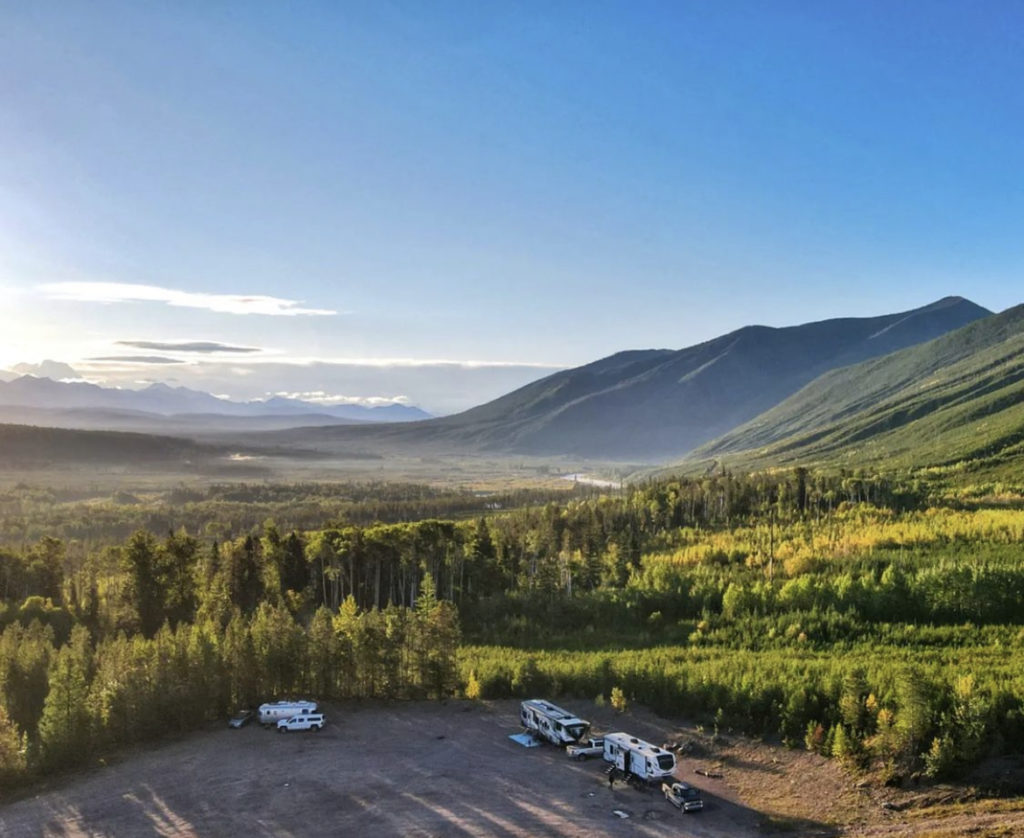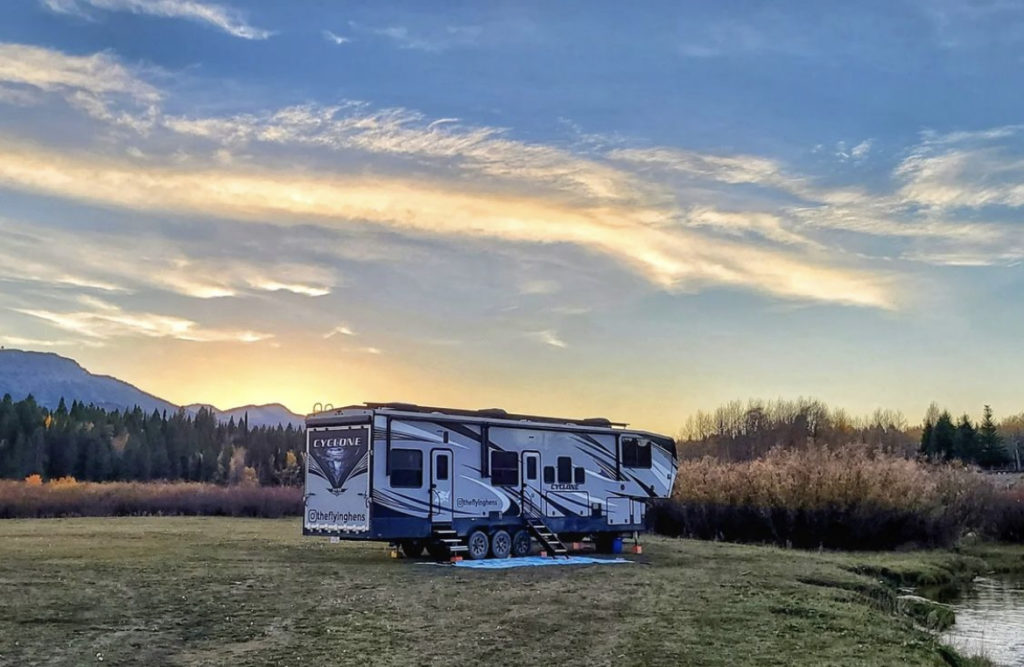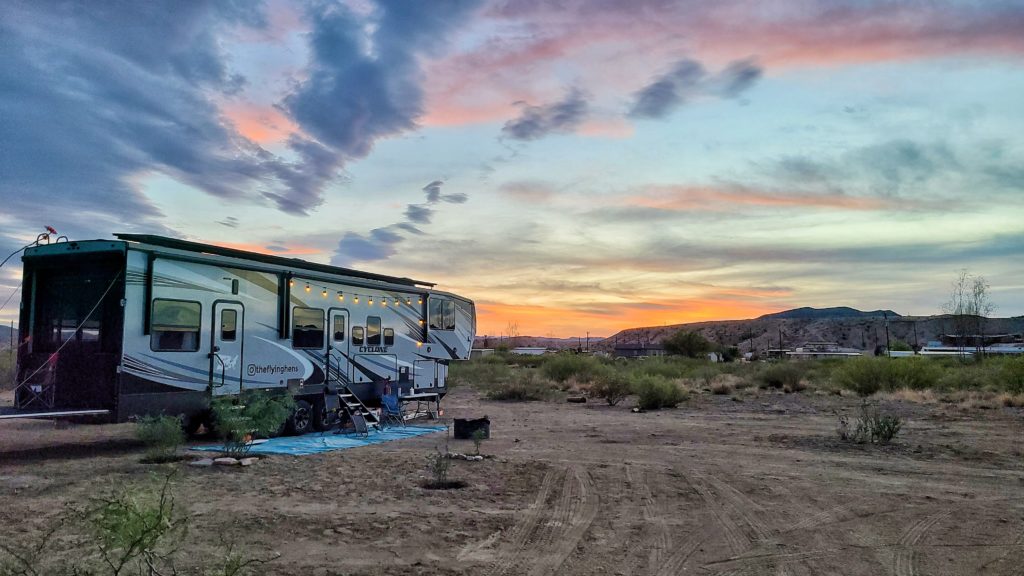Boondocking Q&A: All of Your Boondocking Questions Answered
We’ve gathered your boondocking questions over the last few months and are going to answer them to the best of our knowledge! Some of these questions are asking about how we specifically boondock in our RV, and some are more general. If you’ve followed along on our blog series about boondocking with The Flying Hens, we’ve covered the basics about this topic in detail. For those of you new here, you can read about the following boondocking topics in these blog posts:
What is Boondocking?
Boondocking Must Haves
Boondocking and Electric
Boondocking and Water/Waste
Our Favorite Boondocking Sites
As always, if you have any questions about boondocking or RVing, feel free to reach out to us!
Q: How often do we boondock verses staying at a campground or resort?
This is one of those personal preference questions, but we happen to LOVE boondocking. When we are traveling, we try and boondock as much as possible. We would even boondock all year long, but some states don’t have a lot of public lands to use for dry camping. We typically book an inexpensive campground for a few nights between boondocking stays just to take advantage of full hookups (long showers, laundry, etc). We save expensive RV resorts for “vacations.”
Q: Do we have much experience with boondocking in the snow and cold temperatures?
Q: How do I prepare to go boondocking? Advice for first timers?
Shameless plug: read our Boondocking 101 blogs listed above! You’ll need to find a place to go boondock, make sure you have water and a power source. I’d also suggest going on a trial run of a short boondocking trip, this may help you figure out what things you need.
Q: What are some boondocking etiquette tips?
Even though boondocking is usually free, there are general guidelines to follow at these campsites. When choosing a place to park your camper, be sure to be courteous to those around you. Is your RV blocking their view? Are you too close? Also, make sure you know if the area you are in allows campfires or if there is a fire ban. Do not damage the surrounding areas (drive over brush or making a new campsite). NEVER dump the black tank on the ground. Only dump grey if it’s legally allowed. A general rule of thumb is to keep quiet hours from 10pm until 7am, and you should not run a generator all night unless you know there is no one around you. Public lands usually have rules on how long you can stay- typically 14 days but some only allow for a few days.
Q: When we first went boondocking, how long did we go for?
Can you even believe that the first few nights we ever spent in a RV was boondocking? We had no idea what we were doing, but we loved the wide open views! Our first RV trip was 10 days long, and we spent 8 of those nights boondocking.
Q: Can we wing it and boondock all year?
Totally! There aren’t rules as to why you couldn’t, just be aware of how long you can stay in each location. Typically, public lands allow you to stay about 14 days at a time. Once you get the hang of it, boondocking is relatively easy as long as you can manage fresh water fill up and dumping.
Q: Are there seasons we need to plan ahead for when boondocking?
Of course. I wouldn’t recommend boondocking in Florida in August or in Montana in January. Most RVers follow nice weather so it’s best to spend summers up north and winters in the south. I wouldn’t necessarily say you need to plan for seasons as much as locations during those seasons. You will need more planning and location options if you are trying to go to a popular spot like Florida during January. However, if you wanted to spend January in Utah, you won’t need to plan as much. I bet you won’t have much trouble finding a spot in the Utah winter.
Q: What is one thing we don’t like about boondocking?
I personally don’t *love* having to be super conservative with water all of the time. It can be frustrating to balance having kids that love getting dirty and trying to limit showers and laundry.
Q: What is one thing that surprised us about boondocking?
I knew that dry camping on public lands would really get us closer to nature and offer pretty views, but I was surprised at just how beautiful those views were! Dark starlit skies, less noise, less people, and amazing landscapes right out of our windows bring about a sense of peace and contentment. It was also surprising to find out that not all boondocking locations are free!
Q: How do we find places to boondock? How do you know if a spot will work?
This blog covers this topic. We usually decide what area we want to travel to (for example, Grand Teton National Park) and then we use Campendium to research boondocking spots close by. Campendium offers campsite reviews to see if there is cell service, what the road condition leading up to the sites are like, and other helpful tips. We sometimes look at Google Maps to see if there may be issues with the roads or getting to the site. If we are uncertain, we will drop the rig somewhere safe and scout out the area first to make sure we can fit.
Q: How do you know if there are Boondocking openings at a location?
Well, there’s no way to really know unless you go or if you know someone already there. Many boondocking locations do not have designated spots, so technically there should be openings as long as you can fit.
Q: Can we just pull off anywhere and park while boondocking?
Not really. Dry camping is usually allowed on public lands such as BLM, Forest Roads, Wildlife Refuge Areas, etc. These are all listed on Campendium. It’s good to check and make sure you don’t need a permit or reservation prior to arrival. We utilize rest stops along a highway to pull off and park for a quick overnight rest during a long travel stretch.
Q: How far in advance do we need to plan to boondocking somewhere?
We do not plan our travels far in advance. Typically, we decide where we want to go within one to two weeks of traveling somewhere, but sometimes it really is the day before! All we do is look up boondocking possibilities on Campendium and research sites that may work for our route. When we traveled to Florida, I had to reserve boondocking sites through online reservations a few weeks in advance. If you’re interested in learning about these Florida campsites, read about them here.
Q: Do we ever get asked to leave when boondocking?
We have not experienced problems while boondocking. If you stay past the permitted length of stay or make a major scene (noise, fire when it’s not permitted), there’s a possibility you’d be asked to leave.
Q: Do we leave our RV at the boondocking site? How do we secure it?
We do leave our RV at the boondocking spot the entire length of our stay. It would be a big pain to take our RV into National Parks or other places we want to explore, and we wouldn’t want to have to scout out a new spot every night. We simply put this pin lock on to secure the RV. Additionally, we also upgraded our standard locks to the RVLock which give an added level of protection. Neither of these are fool proof, there is always a threat of someone breaking in or stealing. It’s best to be as prepared as possible and vigilant.
Q: What are the best boondocking locations?
We wrote a blog about this! You can see our favorite boondocking spots across the country in our blog post here. Not to give it away, but our favorite boondocking spot in the country is this one, with the view of the Tetons in Grand Teton National Park.
Q: How often do you refill water while boondocking?
For reference, we have a 2021 Heartland Cyclone 4007 which has a 100 gallon fresh water tank. Every camper has a different size fresh water tank, so you have to factor that in when comparing. When we are super conservative with water usage, we can usually go 5 days without refilling our water tank. Being super conservative with water usage means that we wash dishes with a trickle of water, catching the dish water into a basin and using that water to flush toilets. This also means that we take 30 second military style showers (using a shower head with an on/off nozzle), and we may use a local laundry mat to do laundry if needed. Essentially, we use our water mostly for cooking and drinking.
Q: Where do you get water while boondocking?
First, you need to have a few important products to help you easily fill water remotely. Wherever you are parked, research nearby gas stations or RV parks. Call and ask if you can fill up water at their location. Sometimes an RV park will charge you a minimal amount, and many gas stations will offer water for free (we usually patronize the station by filling up with gas or buying a beverage). We use this 60 gallon portable water bladder and a water pump to transfer water to the tank.
Q: How often do you dump tanks? Where can you dump?
Again, every camper is different in terms of tank sizes. Our Cyclone has (3) grey tanks and (2) black tanks. We can go a week or more without dumping our grey tanks if we are being mindful to not put water down the drains (collecting dish water, bathing in a basin, etc). 3 weeks is about the maximum amount of time we can go without dumping our black tanks. Since most boondocking locations allow for a max stay of 14 days, we haven’t had to worry about dumping our black tank while boondocking. When we are leaving a boondocking site, we will dump our tanks before heading to our next location.
Research nearby places (RV park or some gas stations) that have dump stations. Call and ask if you can dump your tank, some places charge a small fee. We have this Camco Rhino Portable Waste Tank that we are able to bring to dump remotely.
Q: How long can we go without power or hookups while boondocking?
We have 3000W of solar to charge our batteries, so the answer to this is… indefinitely. However, you don’t need a fancy solar display on your roof to go boondocking! As long as you have a solid battery setup and a way to charge those batteries (generator), you’re good to go. If you want a better understanding of how much battery power you need for your RV daily, read our blog post here or watch our YouTube video about this topic here.
Q: Have we boondocked with a portable generator?
Yes! We have this portable inverter generator, which has worked great for times when we want to run an extra AC or need a boost of charge on a cloudy day.
Q: How do you make sure your generator will run while boondocking?
Generators don’t have legs, silly, they can’t run.
I kid, I kid. Routine maintenance of your generator is key (oil and filter changes, etc) Start up your generator at least once a month. Before your trip, test the generator by connecting it to your RV to make sure it works. Make sure to fuel it up and have fuel on hand as well.
Q: What is the best solar for a travel trailer?
Deciding to add solar to your RV is an investment, so you need to weigh the pros and cons. There are permanent solar panels that you can add to the roof of your RV, but you’ll have to factor in weight limits for your camper. A complete solar installation like this is the most expensive option but is worth it to the person who plans to boondock often. Another option is to have portable solar panels, which are far less money and may work well for a smaller camper. To help calculate how much solar you will need for your rig, I highly recommend watching this video all about solar!
Q: What are our top product recommendations for boondocking?
Clearsource Water Filter – MUST HAVE. This water filter is the best out there and allows us to have clean water no matter where we fill up!
Aquatank Water Bladder & Water Pump– for filling up our fresh water tank remotely
Portable Waste Tank– For remote dumping of grey and black tanks.
Macerator– For pumping waste from portable waste tank into dump station.
Solar/Generator– To charge batteries!
Batteries- It may be worth it to upgrade your batteries to meet your boondocking power needs. Many RV people like Battleborn, we opted for Tesla batteries!
Sink Rinse Basin– To save rinse water and avoid filling up grey tank.
Water Saving Shower Head– Easy on and off switch to quickly rinse between lathering.
Internet/Cellular Antennas- To stay connected even in remote locations.
Leveling blocks– Boondocking locations are not level, these help even things out.
We hope reading through these questions helped in understanding the details of boondocking. Hopefully, you feel better prepared and a bit more confident to try it out yourself. Tell us in the comments below, where are you planning to go first?








